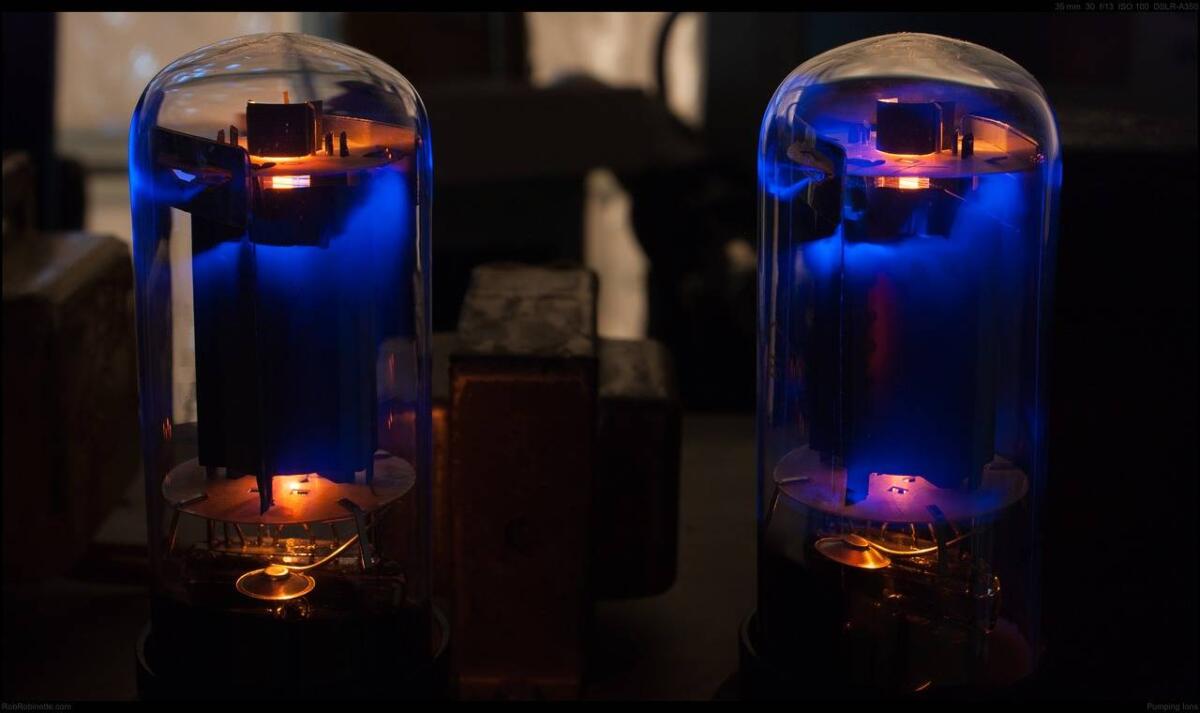
My take on the age-old debate over guitar amplification. Valve vs Solid-state/Modelling. The case for and against valves.
The Case for Valves
Tone
Tone is, of course very difficult to describe and highly subjective. In my experience, all my A/B comparisons have resulted in the valve amp coming out on top. Valve amps just sound bigger, weightier, more organic/natural, and, with their unique smell, engage your senses a lot more.
In a live scenario, my BOSS Katana gets me in the valve ballpark as near as makes no odds, but it’s during recording is where the differences are the most apparent.
Valve amps sound like what they are, authentic amps delivering the authentic tone that Solid-State/Modelling amps are trying desperately to emulate.
Desirability
I’ve owned some truly great valve amps in the past (see the full history here). And, yes, it did feel good to own them and to have others comment on their tone.
Players and knowledgeable punters will shun you if you ever move over to the dark side of solid-state/modelling. Can you live with yourself?
Resale value
Solid-state/Modelling amps are merely soulless. disposable, consumer electric boxes, whereas some valve amps (Vox and Marshall, in particular) have become part of music folklore, with a resale value to match.
Valve amps are an investment. Solid-state/Modelling amps are a throwaway purchase.
Ease/Cheapness of repair
Point to point valve-amps (the most expensive of them all) are also the easiest and cheapest to repair, sometimes involving a single readily available resistor or connection.
In contrast, modern PCB’s on most solid-state/modelling amps (as well as many valve amps) may need sourcing to replace in their entirety, or a the very least a very fiddly repair job.
Adaptability
My old Marshall DSL 401 springs to mind here. I could certainly gig with it, but it was also an incredible recording and practice amp. In contrast, I regularly gig and practice with my BOSS Katana 50, but recording would show up its tonal deficiencies all too well.
A decent valve amp covers more situations.
The Case Against Valves
Reliability
When playing live, you need to minimise distractions and worries.
Valves have and always will be a concern, nagging in the back of your mind. What if there’s a change of temperature? What if you knock them? Are they due a replacement? All those thoughts are confidence killers on-stage.
If you don’t have the luxury of a backup, a solid-state/modelling amp is the only way to give you peice of mind.
Weight
A simple one really. Valve amps weigh a lot more than there comparably powered solid-state/modelling counterparts.
Not an issue for a recording of course, but when gigging, solid-state amps make your life a LOT easier.
Cost
The initial cost of a solid-state/modelling amp is a lot less than a comparable valve amp. Maybe you’re a beginner or are getting back into the guitar casually. If your goals aren’t long term, perhaps a big investment on a valve amp isn’t top of your list?
Size
Along with their lighter weight, solid-state/modelling amps are just easier to handle and live with. Stage space is sometimes at a premium so having a small footprint for your amp gives real benefits.
Features
Solid-state/Modelling amps often have a much wider range of features compare to valve amps. My BOSS Katana, for example, features multiple channels and a whole suite of internal BOSS effects, making it great for practice and experimentation.
Valve amps rarely compete on features and when they do it’s at a premium cost-wise.
Conclusion.
There’s nothing quite like the feel of a valve amp and with a decent sound engineer the only true option for recording truly outstanding guitar tone.
It’s live where the convenience and ever more authentic tones of solid-state/modelling technology blur the lines somewhat. As technology progresses, we’re only going to get closer.
Of course, if reliability was taken out of the equation with backups and we all had roadies and guitar techs. I’d still be a valve player now.
Alas, I haven’t, so solid-state gets me close enough and I’m free of worry, whilst looking after my back and wallet. Solid-state amps are just giving me fewer issues to deal with, which means a lot!
What’s your take? Drop me a comment below.




I’m really enjoying reading your blogs. For a pedal platform, what are the advantages of a valve amp? (The usual assortment of pedals: fuzz, OD and distortion, delay and reverb.) The Roland JC 120 seems to have a following, but its more expensive than many valve amps! In the more budget friendly practice amp range, how would you compare solid state (non-modelling) vs valve (say 5W)?
Currently I’ve got a Vox Pathfinder 10. The neighbours are deaf, and 50m away, so I can go louder…
Just checked out the MV50’s. Draw dropping! Maybe the clean would work best for live?. Also it would need a 4ohm cabinet to achieve the full 50 watts though.
Thanks Burk. Hopefully I’ll get a chance to review Fractal (or Kemper) to find out!
Have you tried the tiny yet powerful Vox mv 50 series with transtube ? Real tubes reinvented, with small size, light weight and real tube tone.
I have a Soldano/Mesa rack that I only occasionally play. I’ve owned a Fractal AX8 for over 2 years. I have gotten numerous comments on the tone of both ! No offense, but I’m pretty sure that a consensus would vote that a Fractal is much closer to real than a Boss katana (still a great piece of gear). I do agree about the magic of tube gear…..but science is catching up quickly !
-I’m 44, been playing since age 12. Enjoyed the read !